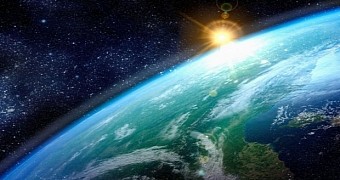Working closely with researchers from Denmark, Germany and the US, scientists at Lund University in Sweden used computer simulations to gain a better understanding of the origin of the mammoth asteroids that now populate the cosmos and of Earth, our home planet.
The team detail their findings in a paper published in the journal Science Advances. In this study, they show how Earth, asteroids and other celestial bodies in the Solar System most likely formed from a cosmic ocean of infinitesimal pebbles.
A better understanding of the origin of massive asteroids
Writing in the journal Science Advances, Lund University researchers and their colleagues explain that, when it was still in its infancy, the Sun was surrounded by an ocean of teeny tiny pebbles by the name of chondrules. These pebbles are believed to have been the building blocks of the Solar System.
The scientists further detail that, as shown by their computer simulations, it was chondrules that formed the first asteroids. As they gathered more such space pebbles, each measuring just 1 millimeter (0.04 inches) across, the first asteroids of the Solar System grew bigger and bigger.
“The chondrules are of exactly the right size to be slowed down by the gas that orbited the young sun, and they could then be captured by the asteroids’ gravity,” said astronomy researcher Anders Johansen.
The scientists imagine the chondrules piling up on the surface of the very first asteroids just how sand piles up on buildings and landscapes during sandstorms. They say that, in time, this process would have birthed space rock measuring an impressive 1,000 kilometers (620 miles) in diameter.
Over a period of time of about 1 to 3 million years, these chondrules-made asteroids could have grown to be about the size of planet Mars, which measures nearly 6,800 kilometers (over 4,200 miles) across.
What does this have to do with the formation of Earth?
Researchers widely agree that Earth formed over the course of about 100 million years and that it was the end result of a series of collisions between so-called protoplanets whose size was comparable to that of Mars. The origin of these protoplanets, however, is yet to be determined.
In their paper in the journal Science Advances, the Lund University team and fellow researchers propose that the protoplanets that formed our home planet were in turn birthed by primordial asteroids that grew to astounding sizes by collecting chondrules.
“Our study shows that protoplanets may have formed very quickly from asteroids, by capturing chondrules in the same way as the asteroids did,” explained study co-author Martin Bizzarro with Denmark's Copenhagen University.

 14 DAY TRIAL //
14 DAY TRIAL // 